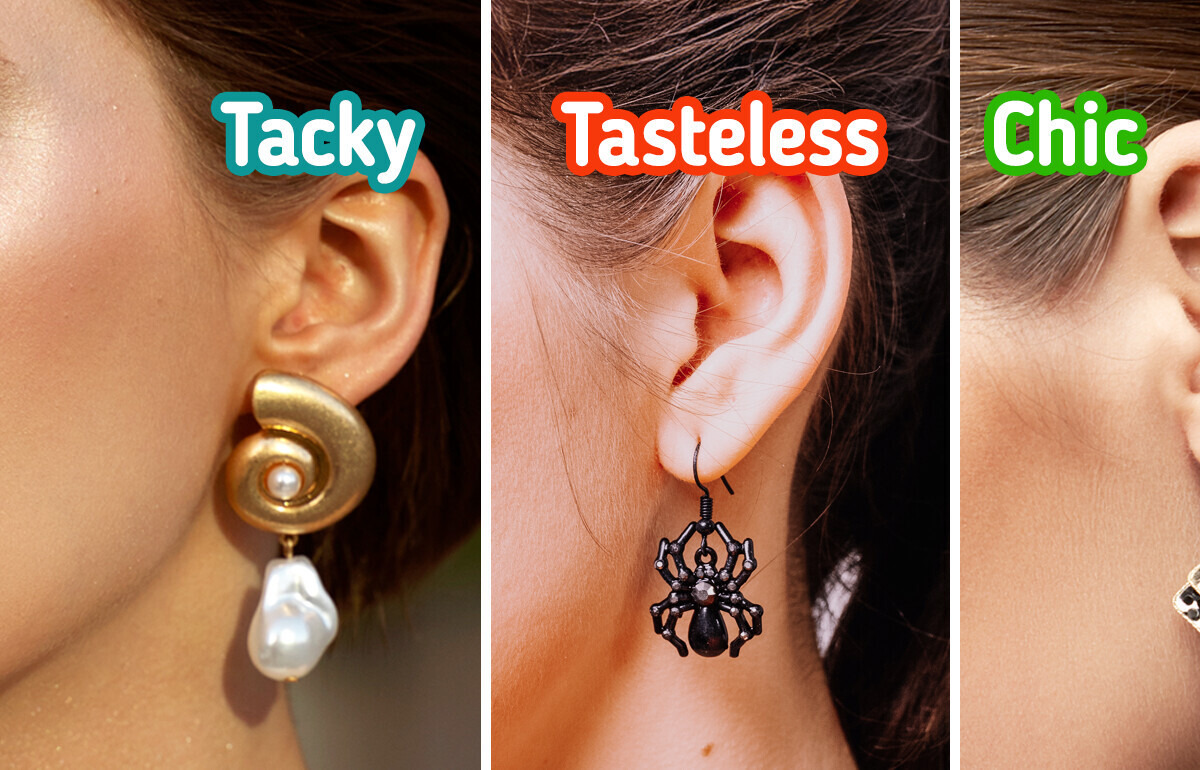“Finally, Her Real Face,” Jennifer Lopez’s Latest Appearance Sparks Mocking Comments


Jewelry has the power to elevate your style—when chosen thoughtfully. The right pieces can add a touch of elegance, highlight your features, and pull an entire outfit together. But with so many options out there, it’s easy to go from tasteful to a little too much without even realizing it.
This guide is here to help you strike the perfect balance: how to wear jewelry that looks refined, polished, and yes—expensive—without overdoing it. Whether you love subtle sparkle or lean toward bold accents, these tips will help you create a look that feels effortlessly put together.
While large earrings can make a bold fashion statement, they may not be universally flattering and can sometimes detract from one’s appearance. Considering factors like face shape, bone structure, and personal style is essential when choosing earring sizes to ensure they enhance rather than overshadow your features. Fashion guides advise that certain face shapes, such as diamond or oval, may be overwhelmed by large earrings, which can make the face appear wider or unbalanced.
Diamond Face Shape: This shape features high cheekbones with a narrow forehead and chin. Experts recommend avoiding wide or heavy earrings, as they can add bulk around the cheekbones, making the face appear wider and unbalanced. Instead, opting for studs, dainty drop earrings, or small hoops can help balance the width of the cheekbones without overburdening the face shape.
Oval Face Shape: Oval faces are considered versatile and can accommodate various earring styles. However, it’s advised to avoid extremely long earrings, as they can elongate the face further, potentially disrupting its natural balance. Choosing earrings that complement the face without exaggerating its length helps maintain its natural symmetry.
Fashion influencer Antonia Higham transformed her style by replacing “cheap on-trend buys,” including massive hoop earrings, with more refined accessories. This change was perceived by her followers as a shift from “vulgar” to “classy,” highlighting how oversized earrings can sometimes be associated with a less sophisticated look.
These are the main things experts advise avoiding:
While bold necklaces can make a fashion statement, it’s essential to style them thoughtfully. Overly massive chains can dominate your appearance and detract from your overall look. To maintain a tasteful and elegant style, opt for balance and simplicity when incorporating statement necklaces into your outfit. While choosing an accessory for your neckline, experts advise following these basic principles:
Fashion experts generally agree that mixing metals in jewelry can be stylish when done thoughtfully. However, combining multiple metals and materials without a cohesive strategy can result in a messy or disjointed appearance.
Beaded necklaces often resemble simple DIY crafts—just some beads strung together—which can make them seem unworthy of a high price tag. Many styles look like they could be made at home using basic materials. Additionally, beaded jewelry tends to have a more mature aesthetic, which may not always flatter those in their twenties or thirties.
If you’re going to wear beads, moderation is key. Opt for designs where beads are used sparingly, serving more as accents than the main focus. Choose smaller beads, as larger ones can add visual weight and potentially age your look. For a more refined and elevated style, prioritize natural materials like pearls or semi-precious stones over plastic or glass beads.
It’s often easy to spot imitation gemstones—especially when they’re poorly made. Bright red plastic won’t pass for rubies; it just looks like red plastic. Cheap imitations rarely capture the depth and brilliance of real gems, and they can make your entire look feel inauthentic.
If you’re aiming for sparkle without splurging, opt for clear crystals. They offer a diamond-like shine and tend to look far more elegant than obviously fake colored stones. Also, steer clear of opaque or dull-looking gems, which are especially prone to appearing artificial and plastic-like.
If your jewelry is turning your skin green, it’s likely due to a reaction with the metals used. Copper is a common culprit, and even nickel or silver can sometimes leave behind stains. Pure gold typically doesn’t cause this issue—but when gold is alloyed with other metals to make it more durable (and less expensive), those added materials can react with your skin.
The extent of the discoloration often depends on your individual body chemistry, meaning some people are more prone to it than others.











